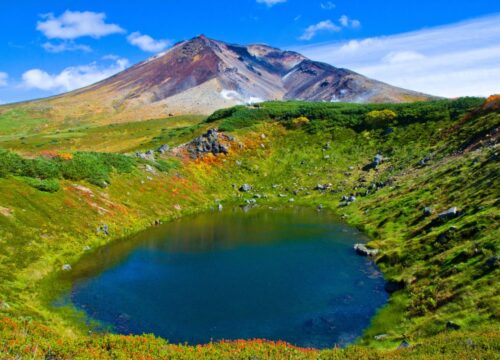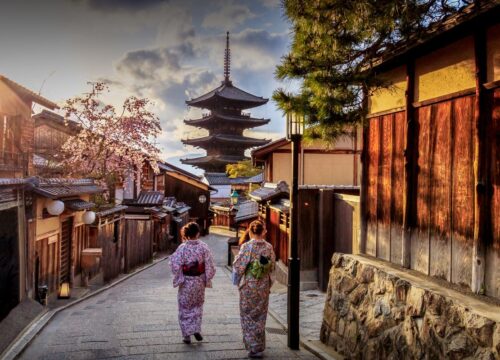Explore The Worlds!
Description
Activities:
Walking, hiking, snorkeling, swimming, wildlife watching, bird watching
Highlights:
Land iguanas, marine iguanas, fur seals, lava lizard, Galapagos snake, magnificent frigate bird, blue-footed boobies, red-footed boobies, short-eared owls, lava herons, cactus finch, sea lions, giant tortoise reserve, NASCAR boobies, swallow-tailed gulls, sea lions, Galapagos hawk, hood mockingbirds, flamingos, Galapagos penguins
Season: All year
Included/Excluded
Tour Amenities
Tour Duration
Duration
Starting Price
From
Contact Us for pricing
Travel Style
Tour Type
Day by Day Itinerary
Santa Cruz Island
After arriving at Baltra airport we will be greeted by an Angermeyer Cruises representative to then board the Passion and have lunch. After lunch, we will navigate a short distance to Black Turtle Cove, a large mangrove lagoon on the north coast of Santa Cruz Island. Pelicans and herons roost on the branches, while marine dwellers such as green sea turtles or golden rays may cruise right next to the panga as it makes its way through the mangroves
Genovesa Island (Tower)
- Darwin Bay: a unique site lined with red mangroves and soft-haired prickly pear cacti where red-footed boobies and great frigatebirds perch tamely. (wet landing)
- Prince Philip Steps: we climb the edge of a cliff where frigate birds, masked boobies, and red-footed boobies nest. We will be seeking out the impressive red-billed tropicbird amidst Galapagos storm petrels. (dry landing)
Bartholomew Island: At Bartholomew we climb up the wooden steps and reach the summit of this spatter cone for a most breath-taking panorama of the island’s well photographed Pinnacle Rock, views of neighbouring Santiago and many other central islands in the distance.(dry landing)
Santiago Island: Sullivan Bay we get to walk over a recent lava flow, including very fresh pahoehoe lava formations, lava bubbles containing crystallized minerals, and pioneer plants. Along the shoreline, we may find Galapagos penguins and herons going after small fish. (dry landing)
Rábida Island: We get to explore the red island’s fascinating interior and saltwater lagoon. Darwin’s finches, Galapagos mockingbirds, and yellow warblers feed off the vegetation. Given the right time of the year we may see brown pelicans nesting on salt bushes that fringe the beach. (wet landing)
Santa Cruze Island: We arrive at Cerro Dragón to visit a saltwater lagoon, home to Greater Flamingos, black-necked stilts, and white-cheeked pintails. Further inland we find a fantastic land iguana nesting site.
Santa Cruz Island: We will spend this day visiting Santa Cruz Island´s most famous highlights.
- Highlands: We will have a dry landing in the dock of Puerto Ayora to then board our transportation and head to the island’s highlands. This area, in contrast to the coastal region, has lush vegetation and forest due to the humidity that gathers in the higher regions. We will visit one of the ranches of the area where it is possible to see giant tortoises in their natural habitat. As these animals migrate from the coastal area to the highlands and back, the chosen ranch will depend on the presence of the tortoises, as they roam free and change locations. This is also a good place to see the Galapagos hawk and barn owl of this island and the surrounding forests are filled of birds such as the vermilion flycatcher or the yellow warbler.We will enjoy lunch at the ranch to then head back to Puerto Ayora
- Puerto Ayora and the Charles Darwin Station: We will visit the Charles Darwin Research Station and the Fausto Llerena Breeding Center. Here, we will see tortoises from different islands. The animals are found in large semi natural pens for their protection, but also to ensure an easy view for the visitors. The pens are divided according to four different stages: eggs, neonates, juveniles (held here until they are mature enough to be “repatriated”), and adults. After this visit, we will have some time to explore the town of Puerto Ayora and its many souvenir shops, before boarding the M/Y Passion for dinner and the evening briefing.
Plaza Sur Island: Plaza Sur is one of the oldest docks of the archipelago, it is very colorful and is home to vibrant green prickly pears, deep red Sesuvium and coppery-orange land iguanas; impressive seaward cliffs are excellent for a variety of coastal birds. This is also a great place to observe the adult and pup sea lions swimming along the shores. (dry landing)
Santa Fe Island: Santa Fe we will see white sand beaches where sea lions are usually resting, we will be looking for the endemic species of land iguana, larger and yellower than land iguanas on other islands. The largest prickly pear cacti in the Galapagos are also found here.
Española: Española is the oldest of the Southern Islands and is the southernmost in the archipelago. Because of its remote location a unique range of endemic species evolved here
- Gardner Bay: An outstanding beach with sea lions, marine iguanas, and the intrepid Española Mockingbird. (wet landing)
- Punta Suárez: A spectacular walk to give insight into the intimacies of life at sea, with nesting sites of blue-footed and Nazca Boobies, as well as the fascinating breeding rituals (April to December) of the waved albatross. Lined with neon-colored marine iguanas (January), and lazy Galapagos sea lions, we walk up to an amazing viewpoint of the famous blowhole. (dry landing)
This is our last day in the islands. After breakfast we will disembark in Puerto Ayora to take our transport to Baltra Airport, doing a short stop to visit the lava tunnels found in the highlands. These intriguing tunnels were formed by a lava flow that hardened on the outside while still maintaining its fluid scolding state on the inside, leaving hollow tunnels where it passed. We will walk inside one of the tunnels (that are artificially illuminated to help visitors) to have a close look at the formations and learn more about the origin of these very volcanic archipelago. After this visit we will make our way to the Baltra airport for the flight to mainland Ecuador.
Explore Tours
Activities:
Walking, hiking, snorkeling, swimming, wildlife watching, bird watching
Highlights:
Land iguanas, marine iguanas, fur seals, lava lizard, Galapagos snake, magnificent frigate bird, blue-footed boobies, red-footed boobies, short-eared owls, lava herons, cactus finch, sea lions, giant tortoise reserve, NASCAR boobies, swallow-tailed gulls, sea lions, Galapagos hawk, hood mockingbirds, flamingos, Galapagos penguins
Season: All year
Included/Exclude
Tour Amenities
Tour Plan
Santa Cruz Island
After arriving at Baltra airport we will be greeted by an Angermeyer Cruises representative to then board the Passion and have lunch. After lunch, we will navigate a short distance to Black Turtle Cove, a large mangrove lagoon on the north coast of Santa Cruz Island. Pelicans and herons roost on the branches, while marine dwellers such as green sea turtles or golden rays may cruise right next to the panga as it makes its way through the mangroves
Genovesa Island (Tower)
- Darwin Bay: a unique site lined with red mangroves and soft-haired prickly pear cacti where red-footed boobies and great frigatebirds perch tamely. (wet landing)
- Prince Philip Steps: we climb the edge of a cliff where frigate birds, masked boobies, and red-footed boobies nest. We will be seeking out the impressive red-billed tropicbird amidst Galapagos storm petrels. (dry landing)
Bartholomew Island: At Bartholomew we climb up the wooden steps and reach the summit of this spatter cone for a most breath-taking panorama of the island’s well photographed Pinnacle Rock, views of neighbouring Santiago and many other central islands in the distance.(dry landing)
Santiago Island: Sullivan Bay we get to walk over a recent lava flow, including very fresh pahoehoe lava formations, lava bubbles containing crystallized minerals, and pioneer plants. Along the shoreline, we may find Galapagos penguins and herons going after small fish. (dry landing)
Rábida Island: We get to explore the red island’s fascinating interior and saltwater lagoon. Darwin’s finches, Galapagos mockingbirds, and yellow warblers feed off the vegetation. Given the right time of the year we may see brown pelicans nesting on salt bushes that fringe the beach. (wet landing)
Santa Cruze Island: We arrive at Cerro Dragón to visit a saltwater lagoon, home to Greater Flamingos, black-necked stilts, and white-cheeked pintails. Further inland we find a fantastic land iguana nesting site.
Santa Cruz Island: We will spend this day visiting Santa Cruz Island´s most famous highlights.
- Highlands: We will have a dry landing in the dock of Puerto Ayora to then board our transportation and head to the island’s highlands. This area, in contrast to the coastal region, has lush vegetation and forest due to the humidity that gathers in the higher regions. We will visit one of the ranches of the area where it is possible to see giant tortoises in their natural habitat. As these animals migrate from the coastal area to the highlands and back, the chosen ranch will depend on the presence of the tortoises, as they roam free and change locations. This is also a good place to see the Galapagos hawk and barn owl of this island and the surrounding forests are filled of birds such as the vermilion flycatcher or the yellow warbler.We will enjoy lunch at the ranch to then head back to Puerto Ayora
- Puerto Ayora and the Charles Darwin Station: We will visit the Charles Darwin Research Station and the Fausto Llerena Breeding Center. Here, we will see tortoises from different islands. The animals are found in large semi natural pens for their protection, but also to ensure an easy view for the visitors. The pens are divided according to four different stages: eggs, neonates, juveniles (held here until they are mature enough to be “repatriated”), and adults. After this visit, we will have some time to explore the town of Puerto Ayora and its many souvenir shops, before boarding the M/Y Passion for dinner and the evening briefing.
Plaza Sur Island: Plaza Sur is one of the oldest docks of the archipelago, it is very colorful and is home to vibrant green prickly pears, deep red Sesuvium and coppery-orange land iguanas; impressive seaward cliffs are excellent for a variety of coastal birds. This is also a great place to observe the adult and pup sea lions swimming along the shores. (dry landing)
Santa Fe Island: Santa Fe we will see white sand beaches where sea lions are usually resting, we will be looking for the endemic species of land iguana, larger and yellower than land iguanas on other islands. The largest prickly pear cacti in the Galapagos are also found here.
Española: Española is the oldest of the Southern Islands and is the southernmost in the archipelago. Because of its remote location a unique range of endemic species evolved here
- Gardner Bay: An outstanding beach with sea lions, marine iguanas, and the intrepid Española Mockingbird. (wet landing)
- Punta Suárez: A spectacular walk to give insight into the intimacies of life at sea, with nesting sites of blue-footed and Nazca Boobies, as well as the fascinating breeding rituals (April to December) of the waved albatross. Lined with neon-colored marine iguanas (January), and lazy Galapagos sea lions, we walk up to an amazing viewpoint of the famous blowhole. (dry landing)
This is our last day in the islands. After breakfast we will disembark in Puerto Ayora to take our transport to Baltra Airport, doing a short stop to visit the lava tunnels found in the highlands. These intriguing tunnels were formed by a lava flow that hardened on the outside while still maintaining its fluid scolding state on the inside, leaving hollow tunnels where it passed. We will walk inside one of the tunnels (that are artificially illuminated to help visitors) to have a close look at the formations and learn more about the origin of these very volcanic archipelago. After this visit we will make our way to the Baltra airport for the flight to mainland Ecuador.


